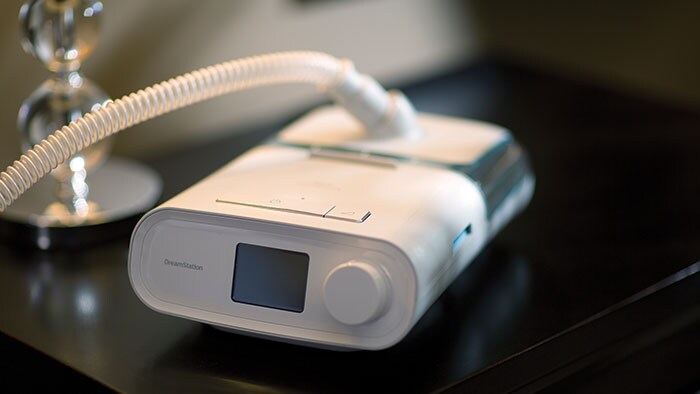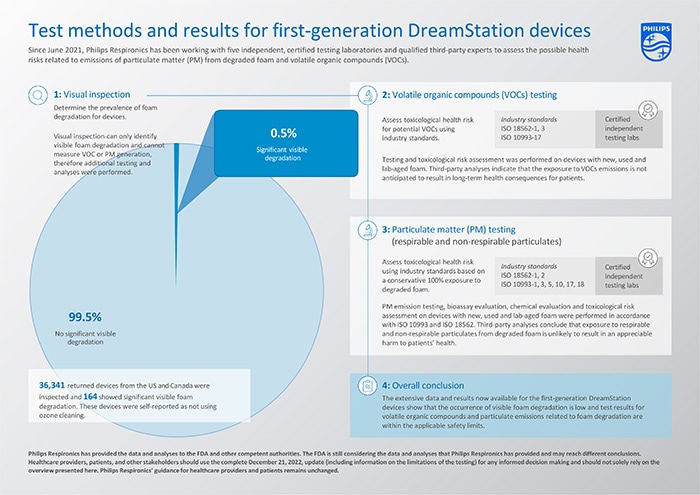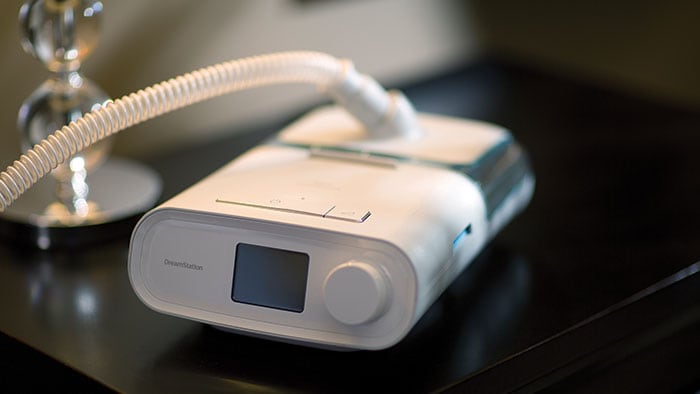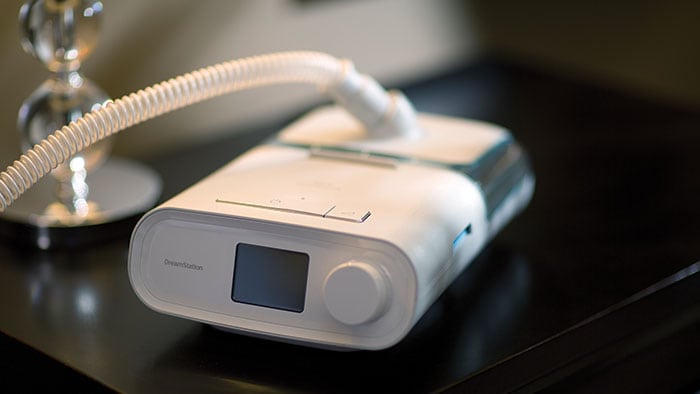dec. 21, 2022
Philips provides update on completed set of test results for first-generation DreamStation sleep therapy devices
Amsterdam, the Netherlands – Royal Philips (NYSE: PHG; AEX: PHIA) today provides an update on the comprehensive test and research program of its subsidiary Philips Respironics, following the voluntary recall notification/field safety notice* to address potential health risks related to the polyester-based polyurethane (PE-PUR) sound abatement foam in specific CPAP, BiPAP and mechanical ventilator devices.
Following previous updates in December 2021 and June 2022, additional test results and assessments have now been completed for the first-generation DreamStation devices (approximately 68% of the registered devices globally). These devices have not been exposed to ozone cleaning in line with the instructions for use.
The test and research program has been conducted together with five independent, certified testing laboratories, and the results have been reviewed and assessed by third-party qualified experts and Philips Respironics, as well as an external medical panel.
The complete update on the PE-PUR testing results and conclusions available to date can be found here, and the overall findings for the first-generation DreamStation devices have been summarized below.
Results for first-generation DreamStation devices not exposed to ozone cleaning:
New, lab-aged and used devices were tested and all were compliant with ISO 18562-2 [1] allowable limits for PM emissions. Testing was performed on devices with varying degrees of degradation (i.e., from no degradation to severe degradation), including 61 new devices, 96 used devices, and 24 devices with lab-aged foam that intentionally had been exposed to significantly elevated temperatures (≥80 oC) and humidity (≥75% RH) to accelerate degradation.
Further tested PM emissions of used devices with degradation were not statistically different than PM emissions of used devices without degradation, suggesting that degradation did not contribute to appreciable elevated levels of respirable particles in the devices tested.
Biocompatibility testing, including the chemical evaluation and toxicological risk assessment in accordance with ISO 10993 [2], is now complete for the foam in first-generation DreamStation devices. Even with the very conservative and theoretical assumption of exposure to all of the degraded PE-PUR foam within the device, the third-party risk assessment concluded that exposure to particulates from degraded foam in DreamStation devices, including potential respirable and non-respirable particulates, is unlikely to result in an appreciable harm to health in patients.
Expanded testing and toxicological risk assessments on multiple devices with new, used, and lab-aged foam have shown no appreciable harm to health for the VOCs detected. Therefore, exposure to the level of VOCs identified to date for the first-generation DreamStation devices is not anticipated to result in long-term health consequences for patients based on ISO 18562-3 [3] testing and evaluation of new, lab-aged and used devices. This is consistent with the results presented in December 2021. Similar to the PM testing described above, VOC testing was performed on new, lab-aged and used devices with varying degrees of degradation.
Based on the visual inspection of the foam in returned first-generation DreamStation devices, the prevalence of visible foam degradation was found to be low. 164 out of 36,341 (0.5%) returned devices from the US and Canada were inspected and showed significant visible foam degradation. These devices were self-reported as not using ozone cleaning. Only 1 out of 2,469 (0.04%) inspected devices returned from multiple countries in Europe showed significant visible foam degradation. This included devices from the Netherlands, the UK, Italy, and Spain, ranged in age up to around 6 years. None of the 1,964 (0%) inspected returned devices from Japan showed significant visible degradation. This is consistent with the results presented in June 2022.
Visual inspection can only identify visible foam degradation and cannot measure volatile organic compounds generation or quantify particulate loss, therefore additional testing and analyses were performed as described above and in the complete update.
“Our first priority is the health and well-being of patients, both in terms of safety and providing replacement devices,” said Roy Jakobs, CEO of Royal Philips. “Over the past 18 months, we have focused on gaining more clarity about the safety of the devices affected by the June 2021 field safety notice, and providing replacement devices to patients as fast as we can. The comprehensive test and research program has yielded extensive data and results for the first-generation DreamStation devices, as published today and presented in the press release, and we now have a better understanding of the potential health risks compared to the limited insights that we had in early 2021. I would like to stress that we are very sorry that it has taken this much time, but the testing involved long throughput times, and needed to be done thoroughly. We deeply regret the concern and uncertainty felt by patients, their physicians, and customers, and continue to work hard to address their needs. By year-end we have ramped up our production such that we have produced almost 90% of all devices that are needed for the remediation program.”
Mr. Jakobs continued: “The relevant competent authorities globally, including the FDA, are still reviewing the extensive data and assessments that we have provided. We share the same objective to ensure patient safety and quality in the delivery of healthcare. We are therefore committed to working closely with these agencies, as we continue to complete the test and research program, and the remediation of the affected devices.”
Results to date on the impact of ozone cleaning on PE-PUR foam degradation
Philips Respironics is also conducting ongoing testing on devices that have been exposed to ozone cleaning in addition to the tests related to first-generation DreamStation devices that have not been exposed to ozone cleaning.
Results to date for first-generation DreamStation devices exposed to ozone cleaning:
Test methods
The test and research program is being conducted together with five independent, certified testing laboratories, third-party qualified experts, and an external medical panel. The applied test methods – comprising test planning, test execution, and interpretation of the results for the completed risk assessments – are in accordance with the applicable ISO 18562 [1,3] and ISO 10993 [2] industry standards. The design of the applied test methods was further scientifically underpinned based on a thorough consideration and mitigation of testing limitations that are inherent to any test standard and/or scientific research. To illustrate this, examples of such considerations and mitigations have been listed below.
The scientific underpinning of the applied test methods included a thorough consideration and mitigation of testing limitations, for example:
Prior history of the test and research program
At the time the recall notification/field safety notice* was issued, Philips Respironics relied on an initial, limited data set and toxicological risk assessment, and assumed a worst-case scenario for the possible health risks out of an abundance of caution. Since then, together with five certified, independent testing laboratories in the US and Europe, as well as other qualified third-party experts, Philips Respironics has conducted a comprehensive test and research program on the PE-PUR foam to determine the prevalence of foam degradation, better assess and scope the potential patient health risks related to possible emission of PM from degraded foam and VOCs and determine the root cause of foam degradation. This also included an in-depth review and re-assessment of data and toxicological risk-assessments prior to June 2021.
The third-party review of the first-generation DreamStation VOC test data and toxicological risk-assessments that was available prior to June 2021 found that the analytical characterization for VOCs at the time misidentified one compound (acetone was misidentified as dimethyl diazene) and mischaracterized another compound (a phenol-based antioxidant and stabilizer present in the PE-PUR foam) as a mutagen and carcinogen. Expanded VOC testing since June 2021 has shown no detection of dimethyl diazene in any of the tests. Through re-evaluation of the VOC data prior to June 2021, the third-party toxicological risk assessment found no risk concern for adverse health effects in patients.
Summary of ongoing tests
Philips Respironics is in the process of completing various other tests. As mentioned above, the toxicological risk assessment of the VOC emissions resulting from ozone-induced foam degradation in first generation DreamStation devices is being finalized. Next to this, testing for the SystemOne sleep therapy devices (approximately 26% of the registered devices globally) and DreamStation Go (approximately 1% of the registered devices globally) that contain the same PE-PUR foam as the first-generation DreamStation devices is in progress.
Additionally, for the Trilogy 100/200 (approximately 3% of the registered devices globally) and OmniLab Advanced Plus ventilator devices (approximately 2% of the registered devices globally) VOC and PM testing continues, as well as chemical evaluation and toxicological risk assessment. These devices contain a different type of PE-PUR foam than the first-generation DreamStation devices [4].
New Trilogy 100/200 devices passed VOC and PM testing to date, as well as several biocompatibility tests including ISO 10993 cytotoxicity, irritation and sensitization testing.
However, new and lab-aged Trilogy 100/200 foam failed ISO 10993 genotoxicity testing, and therefore a weight of evidence assessment is ongoing to confirm or exclude potential risks for patients under the expected usage of these devices. Similar to the analyses performed for the first-generation DreamStation foam, additional chemical characterization as well as experiments to assess the probability and amount of degraded PE-PUR foam that can potentially reach the patient are being conducted to support the full toxicological risk assessment.
Guidance for healthcare providers and patients
Philips Respironics continues to advise patients using affected CPAP/BiPAP sleep therapy devices to contact their physician or care provider to decide on a suitable treatment for their condition, which may include stopping use of their device, continuing to use their affected device, using another similar device that is not part of the recall, or using alternative treatments for sleep apnea. Moreover, patients are advised to follow Philips Respironics’ instructions and recommended cleaning and replacement guidelines for their CPAP machine and accessories. Ozone and UV light cleaning products are not currently approved cleaning methods for sleep apnea devices or masks and should not be used. Philips Respironics also continues to advise users of mechanical ventilator devices to contact their healthcare providers before making any changes to their therapy.
Remediation program
Philips Respironics remains fully committed to support patients, remediating the devices affected by the recall notification/field safety notice* and continues to work with the relevant competent authorities to further optimize the remediation plan. Philips Respironics expects to complete around 90% of the production this year for the delivery of replacement devices to patients.
Silicone foam testing per FDA’s November 2021 request
In November 2021, the FDA requested that Philips Respironics retain an independent laboratory to perform additional testing to determine what, if any, potential safety risks may be posed to patients by silicone-based foam. Philips Respironics engaged independent testing laboratories to perform additional VOC testing. Based on the final reports subject to FDA review, Philips Respironics has not identified any safety issues.
Additional information
Further information, including the complete update and FAQs, as well as video messages from Chief Medical Officer Jan Kimpen and Technical Project Manager for the test and research program Jan Bennik, can be found here.
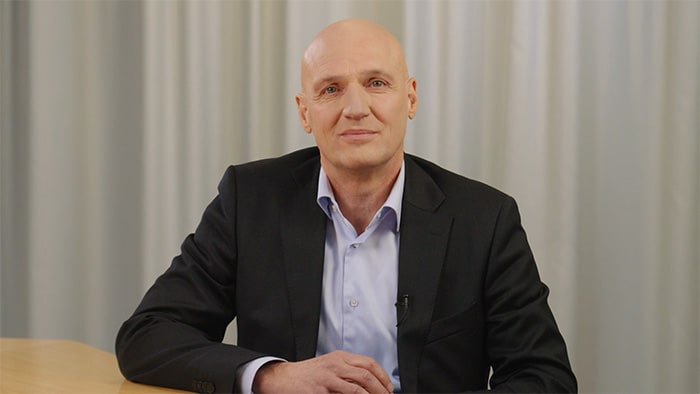
Jan Kimpen, Chief Medical Officer, discusses what the test results mean for healthcare providers and their patients
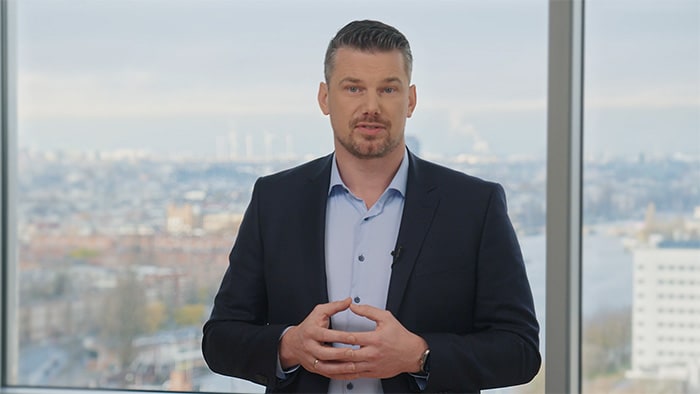
Jan Bennik, Head of Test and Research Program, explains the details behind the testing results
* Voluntary recall notification in the US/field safety notice for the rest of the world.
[1] ISO 18562-2: Biocompatibility evaluation of breathing gas pathways in healthcare applications – Part 2: Tests for emissions of particulate matter.
[2] ISO 10993: Biological evaluation of medical devices; Part 1: Evaluation and testing within a risk management process; Part 3: Tests for genotoxicity, carcinogenicity and reproductive toxicity; Part 5: Tests for in vitro cytotoxicity; Part 10: Tests for irritation and skin sensitization; Part 17: Establishment of allowable limits for leachable substances; Part 18: Chemical characterization of medical device materials within a risk management process.
[3] ISO 18562-3: Biocompatibility evaluation of breathing gas pathways in healthcare applications – Part 3: Tests for emissions of volatile organic compounds.
[4] First-generation DreamStation, SystemOne and DreamStation Go devices contain Type A PE-PUR foam, while Trilogy 100/200 devices contain Type B PE-PUR foam, and OmniLab Advanced Plus devices contain Type A and Type B PE-PUR foams. The known differences between the Type A and Type B foams are that Type B foam can be used with an acrylic pressure sensitive adhesive, has a lower density, has a different thickness, and also contains an additive to reduce potential flammability.
About Royal Philips
Royal Philips (NYSE: PHG, AEX: PHIA) is a leading health technology company focused on improving people's health and well-being, and enabling better outcomes across the health continuum – from healthy living and prevention, to diagnosis, treatment and home care. Philips leverages advanced technology and deep clinical and consumer insights to deliver integrated solutions. Headquartered in the Netherlands, the company is a leader in diagnostic imaging, image-guided therapy, patient monitoring and health informatics, as well as in consumer health and home care. Philips generated 2021 sales of EUR 17.2 billion and employs approximately 79,000 employees with sales and services in more than 100 countries. News about Philips can be found at www.philips.com/newscenter.
Forward-looking statements
This statement contains certain forward-looking statements with respect to the financial condition, results of operations and business of Philips and certain of the plans and objectives of Philips with respect to these items. Examples of forward-looking statements include statements made about the strategy, estimates of sales growth, future EBITA, future developments in Philips’ organic business and the completion of acquisitions and divestments. By their nature, these statements involve risk and uncertainty because they relate to future events and circumstances and there are many factors that could cause actual results and developments to differ materially from those expressed or implied by these statements.
Topics
Contacts

Lisa Pernbrink
Philips Nordics Brand & Communication E-post: lisa.pernbrink@philips.com
You are about to visit a Philips global content page
ContinueMedia assets
Press releases
Get our press releases by e-mail
You are about to visit a Philips global content page
Continue
